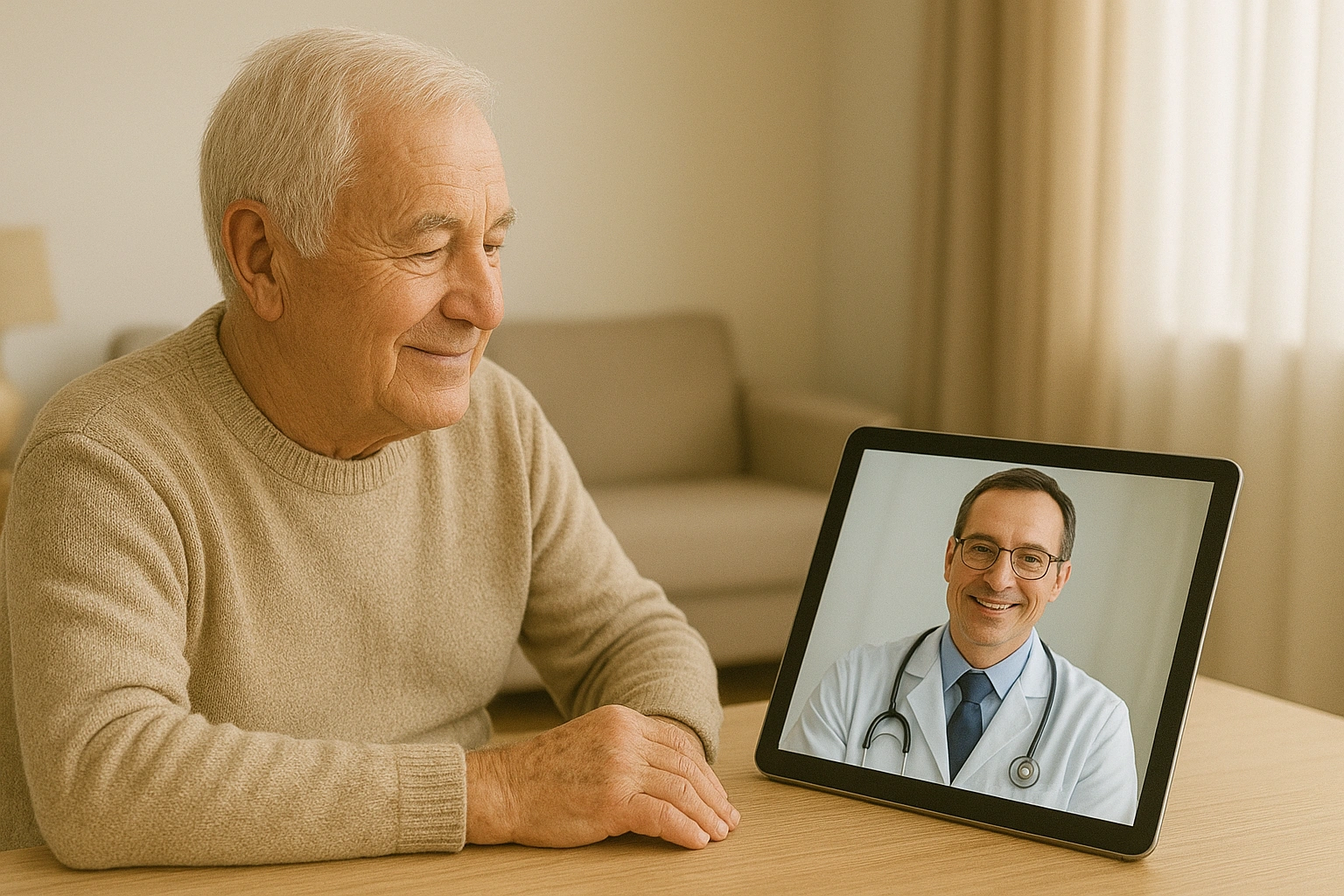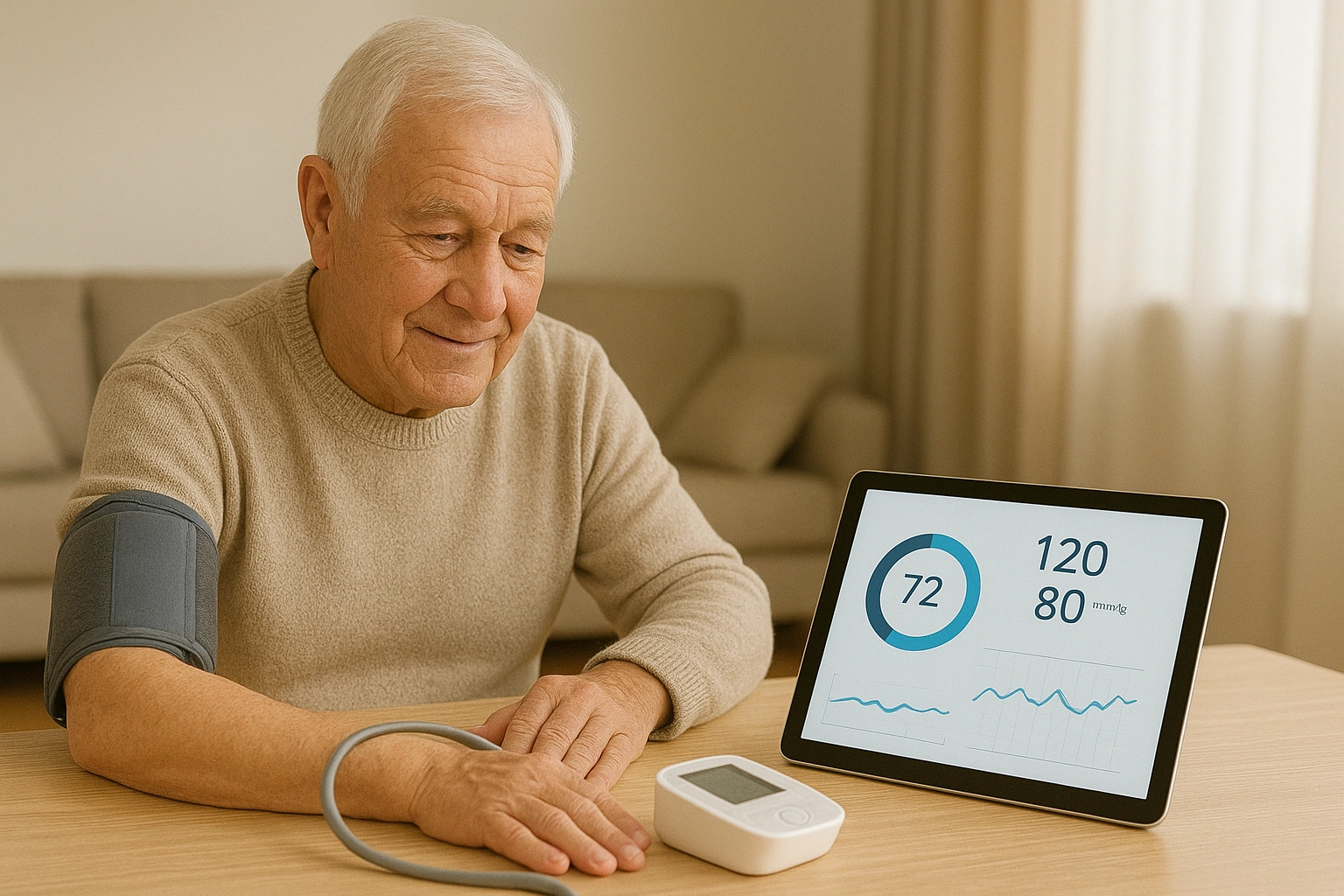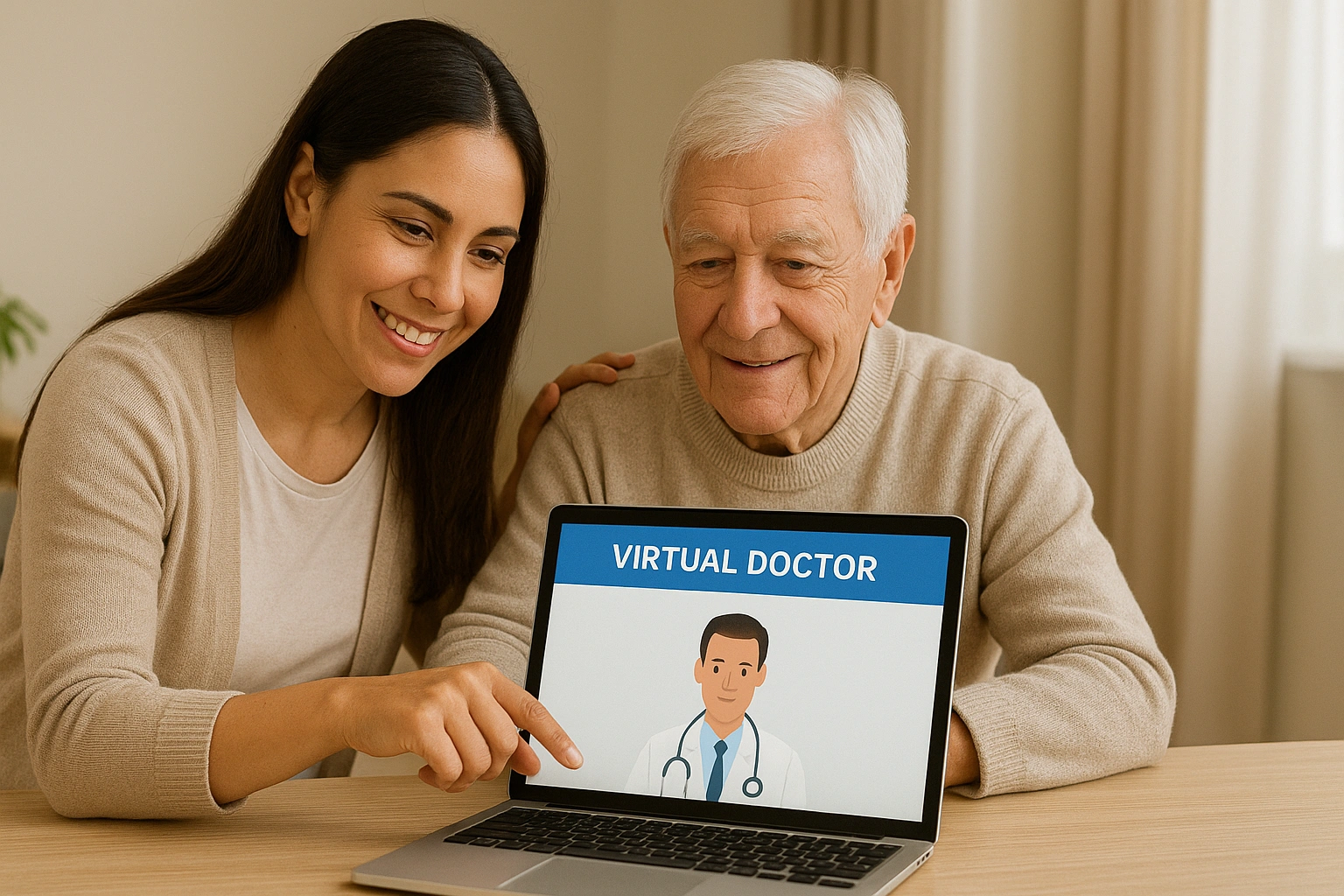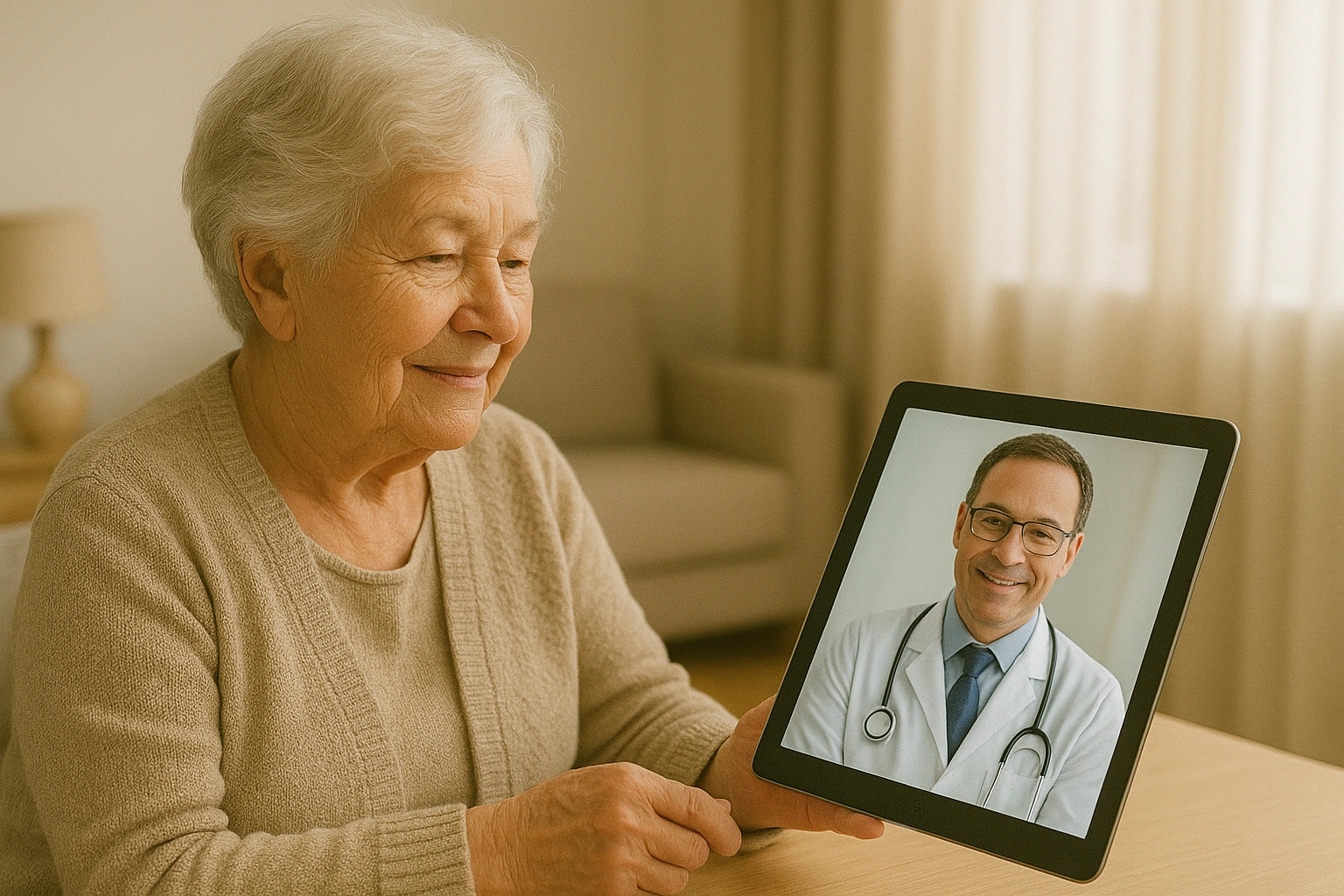
For many seniors and their families, a routine doctor’s appointment can feel overwhelming. Telehealth senior care offers a solution by eliminating the need for transportation, long waits, and exhausting schedules. With telehealth senior care, seniors can have consultations from the comfort of their own home, making telehealth senior care a practical way to maintain regular checkups. By adopting telehealth senior care, families can ensure consistent, high-quality care without the stress and logistical challenges of traditional appointments.
But a healthcare revolution is underway, and it’s happening right on your screen. Telehealth senior care is breaking down traditional barriers, bringing medical consultations directly into the home. With telehealth senior care, families can manage chronic conditions, get timely advice, and monitor ongoing health more effectively. By embracing telehealth senior care, you can create a smoother, more convenient, and highly effective healthcare experience for your loved one while ensuring continuous support.
What Exactly is Telehealth for Seniors?
Telehealth senior care uses digital information and communication technologies, such as computers and smartphones, to access healthcare remotely. With telehealth senior care, a senior can have a video consultation with their primary doctor, attend a virtual therapy session, or have vitals like blood pressure monitored in real time. By incorporating telehealth senior care into daily routines, families and caregivers can stay informed, ensure timely interventions, and reduce the stress of frequent in-person visits. Telehealth senior care makes healthcare more accessible, continuous, and personalized for older adults.
This is not a futuristic concept; it is the new standard of care. The COVID-19 pandemic dramatically accelerated its adoption. According to the U.S. Department of Health and Human Services, telehealth use among Medicare beneficiaries skyrocketed during the pandemic, and a significant portion of that use has been sustained. The trend for 2025 is clear: telehealth is a permanent and expanding feature of the healthcare landscape, making the virtual doctor for the elderly an increasingly common and vital resource.
The Game-Changing Benefits of Virtual Care
The shift to telehealth offers transformative advantages that directly address some of the biggest challenges in senior healthcare.
Dramatically Improved Access to Care
This is the most significant benefit. For seniors with mobility issues, those living in rural areas far from specialists, or those who find travel physically taxing, telehealth removes the barrier of distance. It ensures that geography and physical limitations no longer dictate one’s ability to receive timely medical advice.
Enhanced Management of Chronic Conditions
Conditions like diabetes, hypertension, and congestive heart failure require frequent monitoring. Telehealth makes these check-ins easier and more frequent. A quick video call to review blood sugar logs or a remote monitor that sends daily weight data to a nurse can help catch problems early and prevent costly hospitalizations.
Reduced Burden on Family Caregivers
For family caregivers, telehealth is a massive time-saver. It eliminates the need to take time off work to transport a parent to and from appointments. A caregiver can join a virtual visit from their own office or home, staying fully involved in the care plan without disrupting their entire day. This vital support, as noted on sites like peternakan.web.id, is crucial for preventing caregiver burnout.
The Core Components of Telehealth Services
Telehealth is not just one thing; it’s a suite of services delivered through different modalities.

1. Live Video Visits (Synchronous)
This is what most people think of as telehealth: a real-time, face-to-face video conversation with a healthcare provider. It’s used for everything from routine follow-ups and medication reviews to urgent care consultations for issues like rashes or colds.
2. Store-and-Forward (Asynchronous)
This involves securely sending medical information (like a photo of a skin condition or a log of blood pressure readings) to a provider for review at a later time. The provider then responds with a diagnosis or advice, often through a secure patient portal.
3. Remote Patient Monitoring (RPM)
This uses digital devices to collect health data from a patient in one location and transmit it to a provider in another. Examples include smart blood pressure cuffs, glucose meters, and digital scales that automatically send data to a care team.
The Virtual House Call: A Real-Life Scenario
Mary, an 85-year-old with congestive heart failure, used to have frequent, stressful trips to the cardiologist. Now, her care is managed through a telehealth senior care program. Every morning, she steps on a smart scale that sends her weight to her cardiac nurse. If the nurse sees a sudden gain—a key sign of fluid retention—she initiates a video call. They can adjust her medication right then and there, often avoiding a trip to the ER. This proactive, convenient care keeps Mary stable and safe in her own home.
Comparing When to Use Telehealth vs. In-Person Visits
Understanding the right tool for the right job is key to using telehealth effectively.
| Situation | Best for Telehealth | Best for In-Person Visit |
|---|---|---|
| Routine Follow-Ups | Ideal for medication reviews and stable chronic condition check-ins. | Necessary for initial diagnosis or if new symptoms arise. |
| Mental Health | Excellent for regular therapy and counseling sessions. | May be preferred for initial psychiatric evaluations. |
| Urgent (but not Emergency) Issues | Great for rashes, UTIs, colds, or asking if a symptom is serious. | Needed for injuries requiring stitches, suspected broken bones. |
| Annual Physicals & Screenings | Can be used for the consultation part. | Essential for the physical exam, blood work, and vaccinations. |
Common Mistakes to Avoid with Telehealth
To ensure a smooth virtual visit, steer clear of these common pitfalls.
- Using It for Emergencies: Telehealth is not for emergencies. For chest pain, shortness of breath, or signs of a stroke, call 911 immediately.
- Not Preparing for the Visit: Don’t just log on. Have a list of questions, your medication list, and any recent vitals (like blood pressure readings) ready to go.
- Ignoring the Tech Setup: Test your camera and microphone a few minutes before the appointment. A poor connection can derail the entire visit. Find a quiet, well-lit space.
- Assuming All Doctors Offer It: While adoption is high, not all providers use telehealth. Always confirm with the doctor’s office when scheduling an appointment.
Expert Tips & Best Practices
Use these insider strategies to get the most out of every virtual visit.

- Have a “Telehealth Helper”: “For the first few visits, it’s incredibly helpful for a family member or friend to be present to manage the technology,” advises Dr. Ken Fujioka, a telemedicine advocate. “This lets the senior focus on the conversation with the doctor, not the computer.”
- Use a Good Quality External Webcam/Microphone: If you’re using a computer, a simple external webcam can dramatically improve the audio and video quality, leading to a much better experience.
- Check Your Insurance Coverage First: Before your visit, call your insurance provider to confirm your co-pay and coverage for telehealth services to avoid surprise bills.
- Use the Patient Portal: Most telehealth platforms are connected to a secure online patient portal. Use it to send messages to your doctor’s office, request prescription refills, and view test results.
Frequently Asked Questions (FAQ)
Q: Is telehealth only for minor health concerns?
A: While telehealth is excellent for routine follow-ups and minor issues, its biggest impact for seniors is in chronic disease management. It allows for regular, convenient monitoring of conditions like diabetes, hypertension, and heart failure, which can significantly reduce hospitalizations. However, it is not appropriate for medical emergencies, which always require a 911 call or a visit to the ER.
Q: Do I need to be a tech expert to use telehealth services?
A: Not at all. Modern telehealth platforms are designed to be extremely user-friendly. Most involve a simple process of clicking a secure link sent via email or text. Many healthcare providers also have staff who can walk you or your loved one through the process over the phone before the first appointment.
Q: Is my privacy protected during a virtual doctor visit?
A: Yes. Healthcare providers are required by law (HIPAA in the United States) to use secure, encrypted platforms for telehealth visits to protect your private health information. These are not conducted over standard video chat apps like FaceTime or Skype.
Q: Does Medicare cover telehealth appointments for seniors?
A: Yes. The COVID-19 pandemic led to a major, permanent expansion of Medicare coverage for telehealth services. A wide range of services, including standard doctor’s visits, mental health counseling, and certain specialist consultations, are now covered when delivered via telehealth.
Q: What equipment do I need for a telehealth visit?
A: The basic requirements are a reliable internet connection and a device with a camera and microphone, such as a smartphone, tablet, or computer. Some services may also use remote monitoring devices like a smart blood pressure cuff, but the core need is a simple video-capable device.
Conclusion
Telehealth is more than just a convenience; it represents a shift in how we approach healthcare for older adults. Telehealth senior care allows seniors to consult with doctors without leaving their homes, making telehealth senior care a practical solution for busy families. By integrating telehealth senior care into daily routines, caregivers can ensure consistent monitoring and proactive management of health conditions. The benefits of telehealth senior care extend beyond convenience—families gain peace of mind knowing their loved ones receive reliable care while staying safe and comfortable at home.
To find telehealth providers and get more information, authoritative sources like the official Telehealth.HHS.gov website and Wired’s health tech section are excellent places to start. The future of senior care is here, and it’s virtual.
What is the biggest benefit your family could gain from using telehealth? Share your thoughts in the comments!
